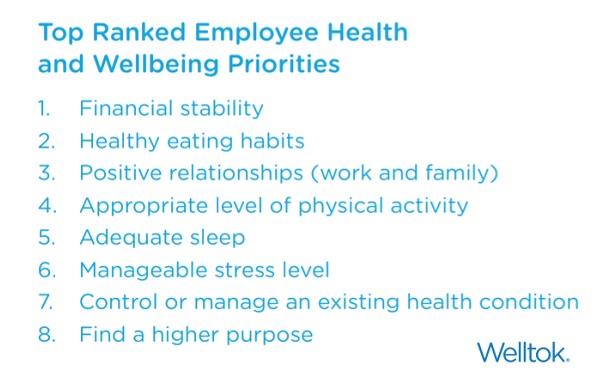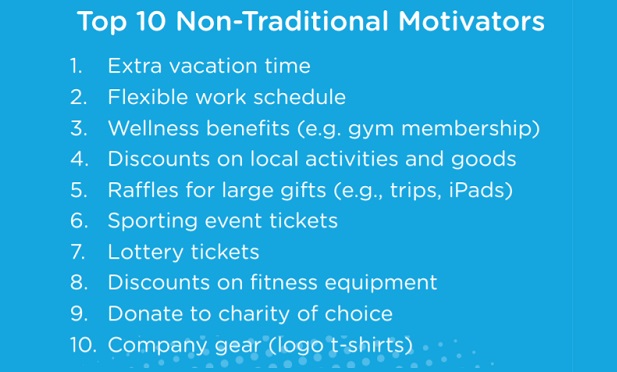 Making well-being offerings relevant to employees will go far in increasing participation; adding incentives will go even further. (Photo: Shutterstock)
Making well-being offerings relevant to employees will go far in increasing participation; adding incentives will go even further. (Photo: Shutterstock)
When it comes to employee well-being programs, even the most supportive employers continue to grapple with a vexing problem: low employee participation.
Recently, Welltok surveyed employees to better understand what they thought of their employer's wellness offerings, and where they saw room for improvement. The results are compiled in Welltok's “Wellbeing Wake-Up Report.”
Overall, the results point to a new generation of holistic wellness programs that address all facets of well-being–physical, mental, emotional, financial and social. This shift is reflected among survey respondents, who identified financial stability was identified as a top priority, followed by healthy eating and positive relationships. In fact, more than 60 percent of workers think employers' wellness offerings should support total well-being.
Related: Employers need to take a strategic look at workers' well-being
“What employees say they want is aligning really closely with what employers are offering,” says Pamela Rich, senior manager of workforce well-being at the National Business Group on Health (NBGH), discussing the results in a recent conference call. “Although employers have expanded the scope beyond physical health, physical health is still a really strong, if not foundational aspect of employer strategy and something employees still want help with.”
The increased scope of these programs points to a need for personalization of programs–more than half of respondents (56 percent) said that the well-being programs their employers offered were irrelevant.
“The big takeaway is the importance of thoughtfully designing your well-being strategy so it's meaningful to all employees,” Rich says. “Different segments of the workforce may need or desire a different type of support.” For example, employees with children and without may both want help with financial wellness, but their financial priorities may be vastly different.

Making well-being offerings relevant to employees will go far in increasing participation (a whopping 80 percent of respondents said more-relevant programs would spurr participation). Adding incentives will go even further–data from a 2018 NBGH survey found that 68 percent of employees offer an incentive for participation in a wellness program. While cash may be one of the easiest and most-common incentives, it's not the only one employees would respond to. Extra vacation time tops the list of non-traditional motivators, as selected by 74 percent of employee respondents, followed by flexible work schedules and wellness benefits such as gym memberships.
And again, just as with wellness program offerings, employees want their incentives to be personalized. “Employers are looking to incentives as a way to provide employees with a lot of choice,” Rich says. ”Incentives give employees a way to personalize their own well-being journey.”

Rich also expects to see more employers focusing on mental health this year. “Many are taking a really thoughtful approach to addressing the spectrum of issues employees may be grappling with,” she says. “Some of the movement that we're seeing is happening on the programmatic side, such as implementation of stress management and resilience programs.”
In addition to such programs, employers are also taking a good look at the office environment and how to create a culture that rejects mental health stigma and reduces sources of employee stress. They're also responding to one of employees' most common objections to well-being programs: not having enough time. According to Rich, employers who make well-being a priority are doing things like offering paid time off to participate in well-being programs.
“Employers are also investing to a greater degree in well-being because many have realized that the well-being of employees is a really important way to contribute to outcomes valued by employers: Greater performance, lower health care costs, greater performance. It's a substantial business prop that's not going unnoticed.”
Read more:
- 4 wellness priorities for employers in 2019
- Survey says: Wellness pays off for recruitment and retention
- Employee financial wellness: The power of incentives
© 2025 ALM Global, LLC, All Rights Reserved. Request academic re-use from www.copyright.com. All other uses, submit a request to [email protected]. For more information visit Asset & Logo Licensing.








